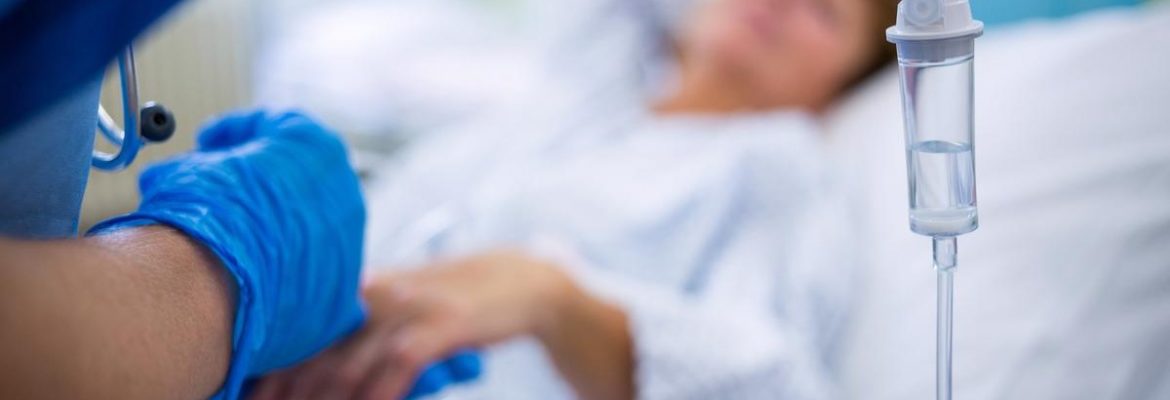Study evaluates efficacy of sarilumab in severe/critical COVID-19 patients
While the majority of patients diagnosed with the coronavirus disease 2019 (COVID-19) will experience mild symptoms, a significant minority of patients will experience more severe consequences, such as acute respiratory distress syndrome (ARDS). Based on the discovery of higher circulating levels of inflammatory mediators such as C-reactive protein (CRP) and interleukin-6 (IL-6), a dysfunctional inflammatory response may be a primary factor of this deterioration.
Small and uncontrolled studies published early on in the COVID-19 pandemic found that treating hospitalized COVID-19 patients with two separate IL-6 receptor (IL-6R)-blocking antibodies, tocilizumab and sarilumab, resulted in significant clinical improvement. More recently, two platform trials discovered that tocilizumab or sarilumab could also enhance clinical outcomes in COVID-19 patients who were also on corticosteroids.

Study: Efficacy and Safety of Sarilumab in Hospitalized Patients With COVID-19: A Randomized Clinical Trial. Image Credit: wavebreakmedia / Shutterstock.com
In a recent Clinical Infectious Diseases study, researchers discuss the results of a clinical trial to assess the efficacy and safety of intravenous (IV) sarilumab, an anti–IL-6R monoclonal antibody, for the treatment of hospitalized COVID-19 patients.
About the study
The current study discusses the results of a randomized, double-blind, placebo-controlled, and adaptive Phase II/III multicenter clinical trial. The strategy permitted adaptations, such as shutting treatment arms or randomization strata, changing provisional Phase III objectives, and re-estimating sample size before Phase III database lock and study readout, as the trial was being conducted during a pandemic.
All patients enrolled in the trial were to be at least 18 years old, hospitalized with COVID-19, and required supplementary oxygen and/or assisted ventilation. All study participants underwent local standard of care (SOC), which included corticosteroids and the administration of potential COVID-19 therapies on an open-label basis.
Patients were randomly assigned 2:2:1 to receive IV sarilumab 400 mg, sarilumab 200 mg, or placebo in Phase II. Corticosteroid usage and illness severity were used to stratify the randomization.
Patients receiving low-flow supplementary oxygen were classified as "severe," whereas critical COVID-19 was defined as a patient who required supplemental oxygen through a nonrebreather mask or a high-flow nasal device, as well as noninvasive ventilation. The utilization of vasopressors, extracorporeal life support, or renal replacement treatment was classified as multi-system organ dysfunction (MSOD).
Patient characteristics and demographics at baseline
In Phase III, 750 patients were randomly assigned to the critical stratum, 347 to the severe stratum, and 233 to the MSOD stratum. The critical stratum patient group had a median age of 61 years, 68% were male, with a 9.0-day median duration of disease.
In nasopharyngeal swabs, the median serum CRP, serum IL-6 concentrations, and viral loads were 168.80 mg/L, 110.91 pg/mL, and 3.95 log10 copies/mL, respectively. Over 34% of critical patients were administered systemic corticosteroids at the time of randomization, which was evenly distributed among treatment groups.
Efficacy outcomes in Phase III
By day 22, 43.2% of patients in the 400-mg group and 35.5% of patients in the placebo group had improved clinical condition by more than one point, thus demonstrating a relative risk improvement of 21.7% in the pre-specified primary analysis between critical patients receiving mechanical ventilation (MV).
The death rate at day 29 was 36.4% in the 400-mg group and 41.9% in the placebo group among critical patients receiving MV at baseline.
Moreover, by day 60, the death rate among patients receiving MV at baseline in the sarilumab 400mg group was 39.4% and 51.6% within the placebo group. Recovery by day 22 was experienced in the critical patients on MV at baseline at 31.8% and 25.8% in the placebo group.
On day 22, 57.4% of patients in the 400-mg group and 64.8% of patients in the placebo group who were not receiving MV at baseline showed over one-point improvement in their condition. By day 29, the 400-mg group had a death rate of 26.5%, which was comparable to 15.7% in the placebo group.
By day 60, patients not receiving MV at baseline in the 400-mg group had a death rate of 29.9% as compared to 25% in the placebo group. Recovery by day 22 was 54.4% in the 400-mg group and 63.9% of patients in the placebo group.
Implications
According to the study findings, the safety of sarilumab in treating COVID-19 was similar to earlier clinical reports, with no new safety flags found. While further research is needed to confirm that sarilumab has a mortality benefit in COVID-19, the recent addition of tocilizumab and sarilumab to treatment guidelines will make large and controlled trials with sarilumab alone difficult.
- Sivapalasingam, S., Lederer, D. J., Bhore, R., et al. (2022). Efficacy and Safety of Sarilumab in Hospitalized Patients With COVID-19: A Randomized Clinical Trial. Clinical Infectious Diseases. doi:10.1093/cid/ciac153.
Posted in: Medical Research News | Disease/Infection News | Healthcare News | Pharmaceutical News
Tags: Acute Respiratory Distress Syndrome, Antibodies, Antibody, Clinical Trial, Coronavirus, Coronavirus Disease COVID-19, Corticosteroid, C-Reactive Protein, Efficacy, Infectious Diseases, Interleukin, Interleukin-6, Monoclonal Antibody, Mortality, Nasopharyngeal, Oxygen, Pandemic, Placebo, Protein, Receptor, Research, Respiratory, Syndrome
.jpg)
Written by
Colin Lightfoot
Colin graduated from the University of Chester with a B.Sc. in Biomedical Science in 2020. Since completing his undergraduate degree, he worked for NHS England as an Associate Practitioner, responsible for testing inpatients for COVID-19 on admission.
Source: Read Full Article
